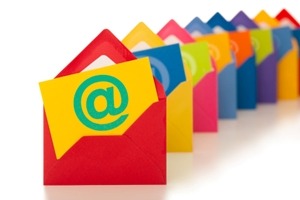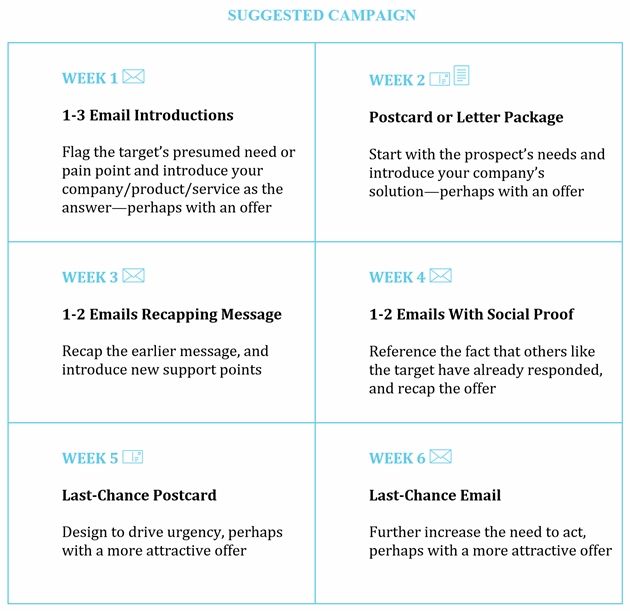
Laying the Groundwork
The following sets of stats, facts, and tips support the wisdom of integrating direct mail into email marketing campaigns.
The also provide some best-of-breed guidelines for effective ways to doing so.
Adding direct mail to email campaigns makes good economic sense:
- Using the two channels results in an up to 35% lift vs. a single channel (source: IWCO).
- 57% of Millennials have made purchases based on direct mail offers (source: USPS).
Direct mail brings advantages to a campaign:
- People spend more time with physical advertising than digital (source: Temple University, USPS).
- People have a stronger emotional response to physical ads and remember them better (source: Temple University, USPS).
- Because direct mail is tactile, it’s harder to ignore.
- You can use QR Code barcodes, near-field communication (NFC), or augmented reality (AR) to link your direct mail piece to your digital campaigns.
- Direct mail comes in a variety of sizes and formats that can be used to attract attention.
- Direct mail offers additional real estate for delivering your marketing message.
Use these five tips for combining direct mail with email:
- Consider delivering critical information in both channels to reinforce the message and increase the likelihood it’ll make an impact.
- Have each communication build on the previous one.
- Use direct mail to emphasize a key message or break up the expected routine.
- Ensure both email and direct mail adhere to the same graphic standards and reflect the same voice so each piece reinforces and extends your brand promise.
- Use direct mail to initiate a conversation with people whose email addresses you do not yet have, or with those who have repeatedly not responded to your emails.
Workflows for Common Marketing Campaign Goals
The following example campaign illustrates how you might combine direct mail and email into workflows to strategically accomplish key marcom goals:
- Workflow name: “Skim the Cream” Lead Generation
- Goal: Generate leads from paid or acquired email lists. Converting prospects into leads can be challenging. Factors that influence success include the quality of the prospect, the competitive environment, the fit of your solution, and the timeliness of your campaign.
- Approach: Since these are prospects, start with email, which allows you to “skim the cream” with what is a more affordable channel. Then, use direct mail in your campaign to try to quickly convert holdouts on your list.

Note: As prospects convert, move them out of flow. After Week 6, the remaining prospects may be “rested” and set aside for a future effort.
Direct Mail Tips and Techniques
Here are some key best-practices for acquisition, customer-deepening, and retention direct mail, as well as 10 steps to more effective direct mail creative.
Use these Top 3 direct mail acquisition best-practices:
- Remember the 40/40/20 Rule: 40% of a mailer’s success will come from the list (targeting the right prospects at the right time); 40% from the offer (compelling and relevant offers are the best); and 20% from the creative (the copy and artwork must be attention-getting and motivating).
- “Eye-magnet words,” such as announcing, introducing, new, now, and free have been scientifically proven to attract above average readership. And the words easy, quick, and improved have been shown to lift product sales. Use them.
- The principle of social proof states that when people are uncertain about what action to take, they do what they see others who are like them do. Therefore, use techniques such as highlighting customer testimonials and stating the number of satisfied customers. Using social proof will increase the mail piece’s response.
Use these Top 3 direct mail cross-sell/upsell best-practices:
- Use what you know about customers, their past behaviors and their preferences to inform subsequent communications and frame new sales opportunities – always taking a programmatic approach vs. a series of unrelated one-offs
- Use the principle of consistency. Social scientists have shown that once someone makes a decision, they will want to act in ways that are consistent with that decision. Remind customers that they have already made the decision to buy from you; doing so increases the likelihood they will buy again from you.
- Don’t try to sell another product or service. Instead, sell a solution to a problem—because that’s what people buy.
Use these Top 3 customer retention best-practices:
- Use the power of exclusivity. Offer “customer only” discounts, “charter membership” opportunities, “not available to the general public” sales. Having such “preferred access” deepens loyalty and spurs additional purchases.
- Communicate on a regular basis. Reinforce the customer’s smart decision to buy your product. Inform customers of news, product enhancements, etc. before you inform the general public.
- Surprise and delight. Provide unexpected offers or services (e.g., send a birthday message and percentage-off coupon). Tell—and show—your customers that you appreciate their business.
Apply these 10 direct mail creative best-practices:
- Balance the rational and the emotional in your messaging.
- Identify the prospect’s main buying barrier and build in the argument to overcome it,
- Write a headline and lead sentence that really grab the reader.
- Be personal, relevant, and target-focused.
- Keep layouts clean, and copy easy to read (avoid bulky paragraphs).
- Remember that specifics out-pull generalities.
- Make sure heads, subs, and copy blocks track.
- Maintain a visual hierarchy that guides the reader through the piece.
- Use reverse type sparingly (in body copy, it reduces readership).
- Pop a strong, single call to action.

Dennis Kelly is CEO of direct mail automation tool Postalytics, which helps customers improve their impact on pipeline and contribution to revenue. His roles span product development, sales, marketing, finance, and HR.
LinkedIn: Dennis Kelly
Twitter: @djkelly1

Nancy Harhut is a renowned creative director who’s held leadership positions at Mullen and Hill Holliday and worked with leading brands Google, Adobe, McGraw-Hill, Nationwide Insurance, and many others. Reach her at [email protected].
LinkedIn: Nancy Harhut
Twitter: @nharhut